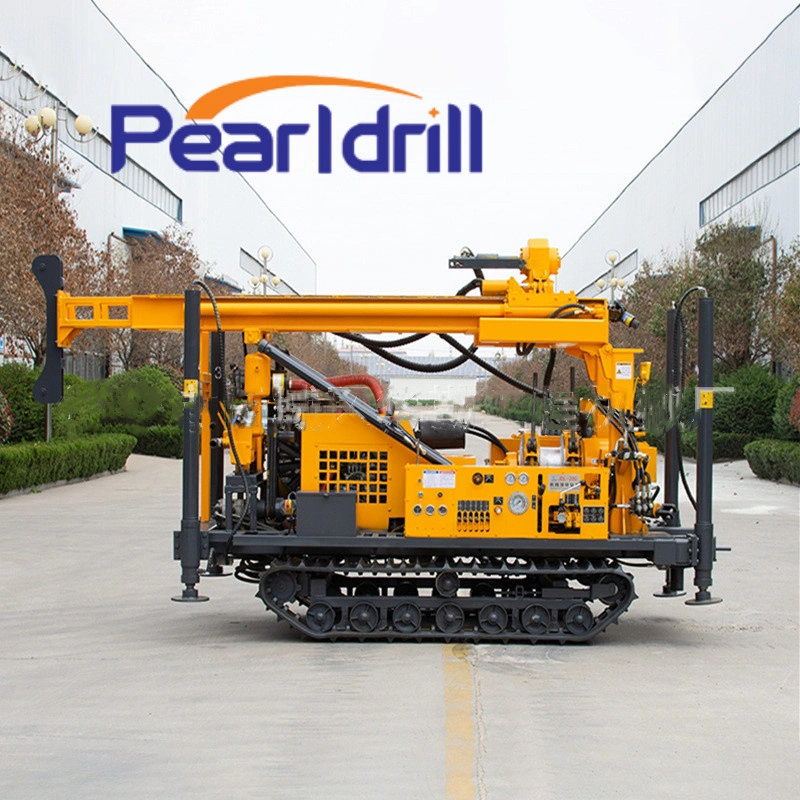How Chinese Water Well Drilling Rigs Prevent Well Collapse in 2025
The drilling of water wells is a critical project for both public livelihood and industrial water supply in China. However, given the country's complex geological conditions, borehole collapse (or "hole caving") remains the No. 1 challenge. It doesn't just slow down construction; it can lead to the loss of drilling tools and result in serious safety and economic damage. Looking ahead to 2025, with technological advancements and better industry standards, China's water well Drilling Rig sector is adopting a more systematic and refined approach to effectively prevent borehole collapse.

Enhancing Geological Survey & Risk Forecasting Accuracy
1. High-Precision Geophysical Tech: Before drilling starts, we'll use high-resolution seismic and electrical resistivity surveys (like high-tech ground-penetrating radar) to precisely pinpoint zones prone to collapse, fault lines, and hidden hydrogeological structures. We're creating 3D geological models to ensure the drilling plan is solid.
2. Drill-Time Formation Monitoring (MWD): We're fitting rigs with advanced Measurement While Drilling (MWD) systems. This means constantly monitoring changes in parameters like torque, pressure on the bit, and Mud Pump volume in real-time. By combining this with logging data, we can get an early warning of a potential collapse.
Innovation in Drilling Mud & Wall-Stabilizing Materials
1. Premium High-Performance Mud: The trend is towards using high-viscosity, low-water-loss, and strong thixotropic polymer muds, bentonite muds, or new anti-sloughing additives. By tightly controlling the mud's specific gravity and viscosity, it forms a dense, tough filter cake on the borehole wall. This effectively balances the formation pressure and prevents the wall from loosening or being invaded by water.
> Key Prevention Rule: The mud level in the hole must be kept at a certain height (e.g., at least 0.5m) above the underground static water level. This ensures enough hydrostatic pressure is maintained—it's the most basic and crucial anti-collapse measure!
2. Chemical & Grouting Stabilization: For areas with very loose or fractured formations, we can inject chemical slurries or cement grout before drilling through. This quickly solidifies the loose ground, creating a strong 'artificial rock layer' to drill through safely.

Upgrading Drilling Equipment & Process
Casing Protection & Casing-Follow Drilling:
In shallow, loose, or easily collapsible sections, we must use steel casing or conductor pipe immediately and sufficiently to protect the wall.
The industry is promoting full casing or casing-follow drilling techniques. This means drilling and running the casing simultaneously, with the casing right behind the bit. This provides continuous support to the wall, basically eliminating the chance of collapse.
Example: Advanced Water Well Drilling Rigs (e.g., Pearldrill):
Advanced brands like Pearldrill feature precise drilling pressure and feed control systems. This allows for low-pressure, slow, and uniform (steady) fine drilling. This control is vital when passing through unstable layers, preventing wall disturbance and instability caused by too much speed or pressure.
Their models often have high-torque, high-efficiency mud pump systems. This is essential for a rapid response if the crew encounters lost circulation or unexpected water inflow, allowing them to quickly adjust mud properties and pumping volume to keep the wellbore fluid level stable and support collapse rescue efforts.
Strict Construction Standards & Safety Management
1. Control Tripping Speed: Operators must strictly control the speed when running the drill string in or out of the hole (tripping). Especially in sensitive zones, operations should be slow and smooth. This is to prevent the swabbing effect (liquid level dropping when pulling out) or the surging effect (liquid level rising when running in), which can cause sudden pressure changes and wall collapse.
2. Emergency Plans & Material Prep: Sites must be stocked with plenty of materials for collapse rescue, such as broken rock, clay, and bagged cement. A detailed emergency plan must be in place. If signs of mud loss or a minor collapse appear, the team can immediately start countermeasures like backfilling, building a stronger filter cake, or increasing mud weight to control the situation.
 In Summary:
In Summary:
The trend for preventing borehole collapse in China's water well drilling rig industry by 2025 is "Prevention First, Combined Control." By making geological surveys more precise, mud systems more innovative, drilling equipment smarter, and construction management more standardized, we can significantly reduce the risk of collapse. This will ensure the quality and safety of water well projects, providing a solid foundation for China's groundwater resource development.
Contact us
Want to Know More About Water Well Drilling Rigs Operation? Contact Us.


